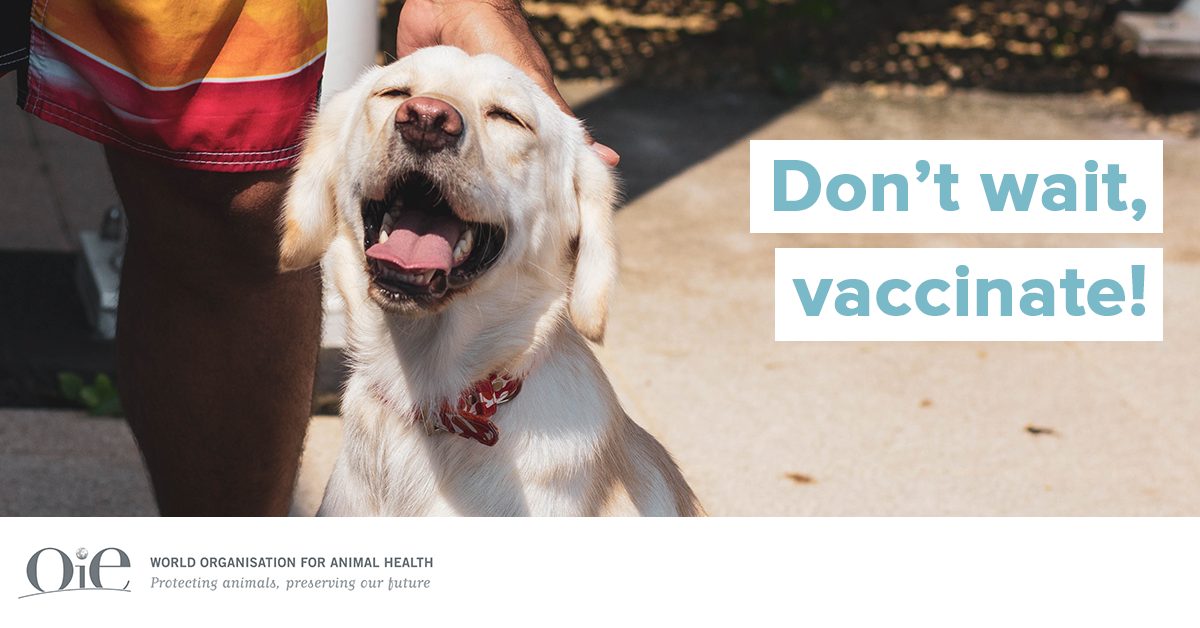


The OIE SRR for Central Asia held a webinar on 9th October dedicated to the deadliest zoonoses, rabies, to celebrate World Rabies Day 2020 with the countries of the region. This event was to focus attention on stray dog population control as a main carrier of rabies. Unfortunately, to date, the Central Asian countries still report rabies cases to the OIE. For instance, the Veterinary Services of Tajikistan reported 37 cases of rabies registered for 9 months of 2019 and 29 cases for the same period in 2020.
The countries of the region all face with the stray dog population, making the regional approach very appropriate. Participants recognize that controlling and eradicating rabies means combatting it at its animal source. “We’ll be glad to have a template of rabies control programmes in accordance with the OIE standards including animal welfare standards”, highlighted the participant of the webinar.
In the region, the national rabies control programmes have been adopted only by Tajikistan and Uzbekistan, respectively:
The OIE and FAO expressed their readiness to consult and assist countries of the region on zoonoses control, particularly rabies. This is proposed to be conducted in the framework of the Central Asia Animal Health Network (CAAHN), a joint regional initiative by the OIE SRR for Central Asia and the FAO Regional Office for Europe and Central Asia.
The issue of stray dog population control is essential for successful and sustainable rabies control and prevention. To address this, the OIE Regional stray dog Roadmap for West Eurasia has been implementing in the region to achieve “zero human deaths from dog-mediated rabies by 2030”, as well as the regional Vision “to become fully compliant with Chapter 7.7. of the OIE Terrestrial Code on Stray dog population control by 2030”. Under this Roadmap, the OIE provided specific training to build national stray dog roadmaps.
The question of animal welfare was also raised with regard to stray dog control. The OIE encourages countries to capture, transport, and hold stray dogs humanely. Public awareness, education, and legislation for responsible ownership are very important to make progress on the stay dog control. Veterinary Services should establish a network in collaboration with the local government authorities, animal welfare NGOs, private veterinarians to develop and maintain these programmes. “Human health, including the prevention of zoonotic diseases, notably rabies, is a priority. Therefore, the dog population management is an integral part of rabies control programmes”, pointed out Dr. Mereke Taitubayev, the OIE representative.
Prof. Anthony R. Fooks, Animal and Plant Health Agency – Weybridge, OIE Reference Laboratory for Rabies, provided detailed and relevant information on rabies: control measures, vaccines, vaccination strategies, vaccine banks, and best practices and experience. The expert also emphasized the importance of the “One Health” approach to address the challenge of rabies in dogs and humans, as well as to cost-effective rabies control.
The OIE SRR for Central Asia took this opportunity to emphasize that since May 2019, the OIE standards on rabies include guidance for countries to apply, on a voluntary basis, for the endorsement of their national control programmes for dog-mediated rabies. These guidelines support countries to compile in a standard manner, documented evidence that demonstrates compliance with the requirements of the OIE Terrestrial Code. The first programmes will be endorsed in 2021.

